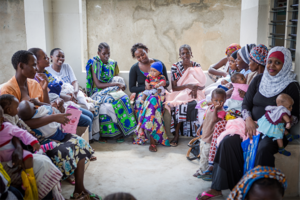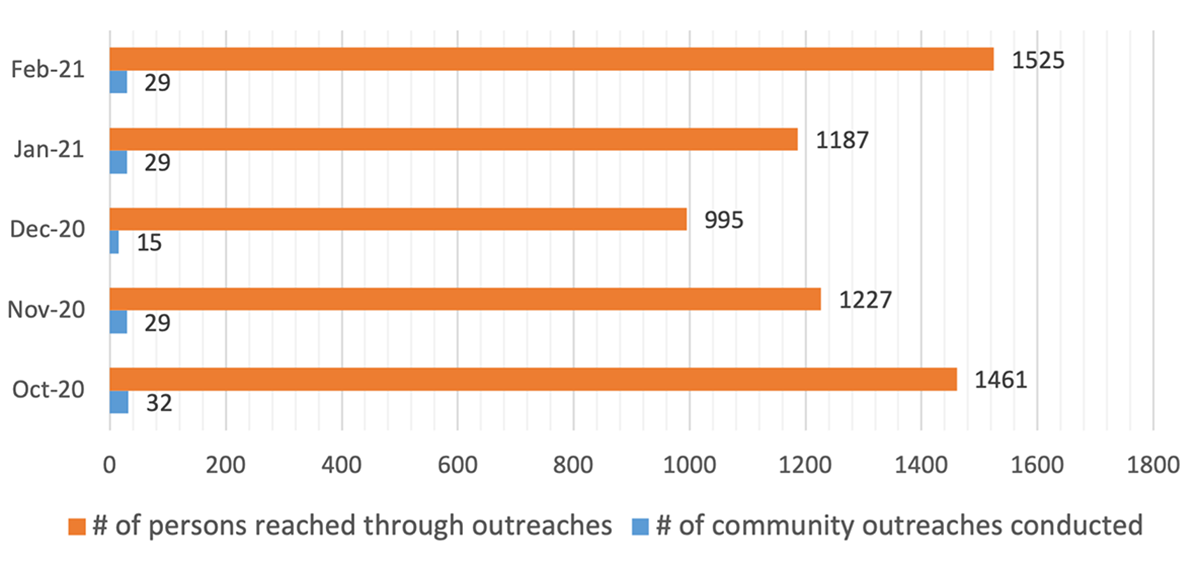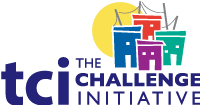- Home
- Help and Support
- Close
- Toolkits
- Global Toolkit
- AYSRH Toolkit
- Hub Toolkits
- Core High-Impact Practices
- Gender Essentials Mini Course
- Close
- Resource Collection
- Community of Practice
- Coaching
- Log In/Register
- My Profile
- English
High-Impact Practice
Supporting mobile outreach service delivery to provide a wide range of contraceptives, including long-acting reversible contraceptives and permanent methods.
 What Is It?
What Is It?
The provision of health services by trained service providers outside health facilities. By taking health care services to communities, service providers reach people who may not normally have easy access to or are less likely to attend facility services. Integrated outreach venues may take place in temporary facilities, such as vehicles or tents, but often they take place in schools, religious buildings or social/town halls. Integrated outreach is also known as community or mobile outreach.
What Are the Benefits?
- Family planning and other related health services are provided as a package.
- By providing these services in venues outside health facilities, health teams are able to reach community members who otherwise might not be willing or able to seek or access health care.
- The provision of integrated services may help reduce stigma for some health services, such as family planning, HIV or tuberculosis.
How to Implement?
Assess Community Needs, Issues and Resources
Assess the community’s need for integrated outreach services: what areas have low access to services and what types of services should be made available through outreach? Individual or groups discussions can help highlight what facilitators for or barriers to providing services should be addressed prior to implementation and what resources are available within the communities to support outreach services. Some communities may require outreach services to include basic emergency services.
Health care providers should review community data and indicators like unmet need to identify a site that is:
- Easily accessible
- Has a relatively high population density and
- Available amenities such as toilets and clean water
A mapping exercise for women and youth can also help determine an ideal location.
Identify and Prepare Outreach Site
Choosing the right site for providing integrated outreach services is important. It should:
- Be centrally located
- Provide privacy for clients
- Meet the storage, hygiene/infection prevention and safety needs for the services being provided and the population being targeted
Appropriate outreach sites may be temporary facilities – such as vehicles or tents – or existing buildings, such as schools, religious buildings or social/town halls.
Maximize Outreach through Service Integration
Integrating and packaging family planning services with other related health services, such as HIV testing and counseling, sexual and reproductive health services, child health care and immunization can help generate demand for family planning. However, you should limit the number and types of services provided based on availability of trained staff, commodities and supplies and appropriate facilities in which to conduct outreach activities. In Kenya, TCI limits the number of services integrated to three or four.
During the planning process, consider how to sustain outreach services. For example:
- Conduct advocacy with national, county/state, district and community stakeholders to ensure resources are allocated and available and that integrated outreach activities are included in the appropriate budget and plans.
- Allow county/state health teams to plan, coordinate and manage integrated outreach activities.
- Use cost-sharing to limit the expense of activities for each stakeholder.
- Leverage community and district resources to help minimize costs.
Collaborate with County/state, District and Community Health Management Teams
Collaborate with local stakeholders to ensure outreach services are incorporated into annual plans and budgets. Work with local health officials to gain approval for scheduling outreach activities and permissions for the outreach site, if necessary. Approval may also be needed from other government agencies that manage the environment or local government, depending on the scope of the integrated outreach activities. Planning must consider the operations of existing facilities and community events in order to avoid clashing purposes or low turnout.
In Kenya, the county health management teams lead the coordination and management of and carry out the implementation of outreach activities. Stakeholders contributed by providing resources and technical assistance.
Collect and Prepare Materials for Outreach Activities
Collect and prepare supplies, commodities, equipment and promotional materials, based on what services will be provided and what type of venue will be used. In Kenya, TCI underscores the need to project, quantify and procure family planning commodities and expendable supplies in advance and, for health services providing integrated outreach, to consider the planning and acquisition of materials as part of their routine. Resource mobilization should be done well in advance of the planned outreach activities.
Ensure Quality Service by Trained Staff
County, state or district management teams should ensure the staff who will be providing outreach services are appropriately trained.
Mobilize Communities
Engage community health workers (CHWs) to mobilize communities to participate in integrated outreach. CHWs may conduct door-to-door mobilization activities, distribute and/or post flyers and posters and provide information at community meetings about upcoming outreach services.
Monitor and Evaluate Activities
Monitoring activities should measure the extent to which services are integrated and the quality of the integrated services and the facilities in which they are offered. Post-outreach meetings provide an opportunity to review any operational or logistical issues that arose and discuss the quality of services provided, in order to inform future integrated outreach activities. In Kenya, TCI uses two indicators to measure success:
- The number of integrated outreach sessions conducted within the catchment area
- The proportion of clients reached through outreach activities
What Is the Evidence?
Nigeria
The two charts below show the number of people reached through integrated outreaches versus the number of outreaches conducted by TCI demonstration sites in both Taraba and Bauchi states.

Taraba integrated outreach results (source: PMIS-2020-2021).

Bauchi integrated outreach results. (source: PMIS-2020-2021)
Evidence from the Urban Reproductive Health Initiative (URHI)
Between 2011 and 2015, Kenya’s Tupange family planning outreach services reached poor populations in urban centers. In the five Tupange-supported sites, outreach services contributed to about 30% of long-acting and reversible contraceptive services provided by the project. By the end of 2013, more than 50,000 clients had received family planning through the integrated outreach of family planning, reproductive and child health services.
Between 2011 and 2015, 425,974 women accepted new forms of contraception, thanks to passionate and dedicated community health workers who drove outreach efforts.



